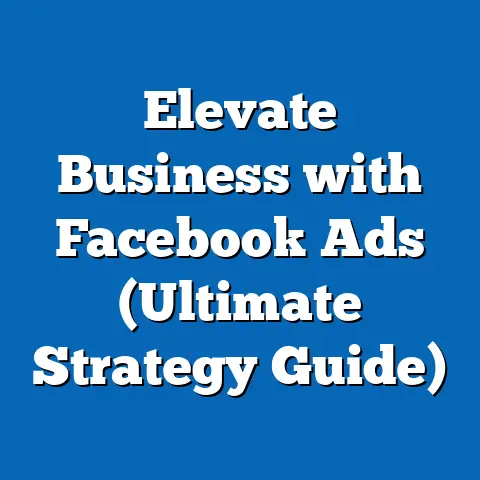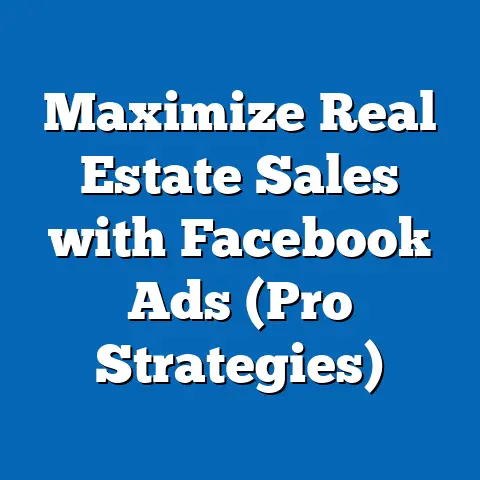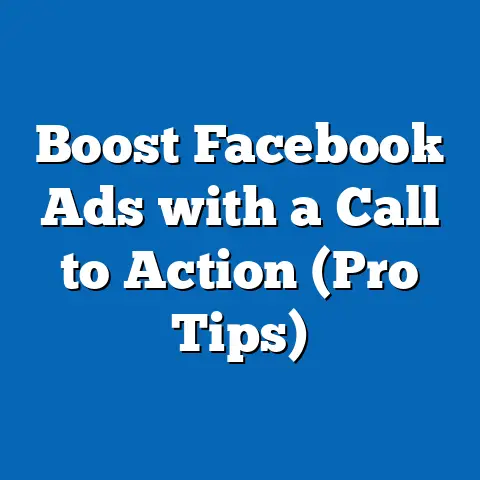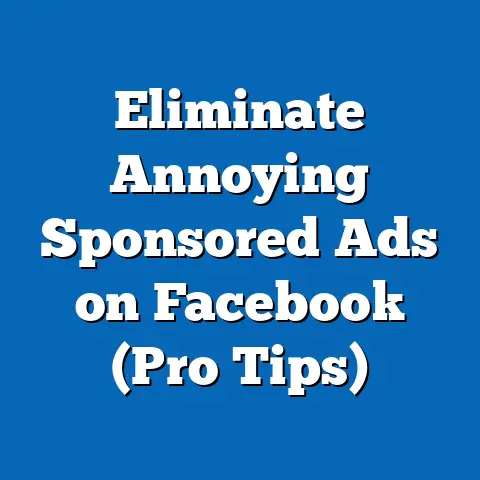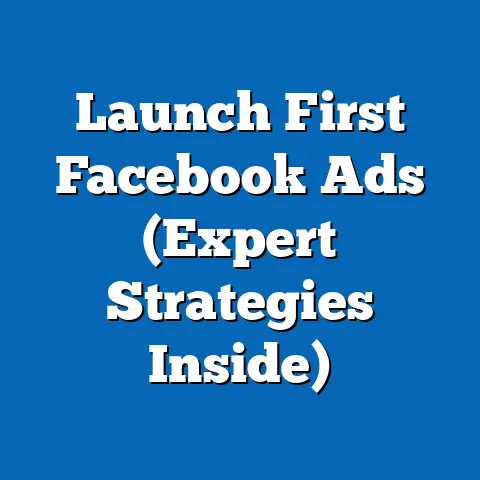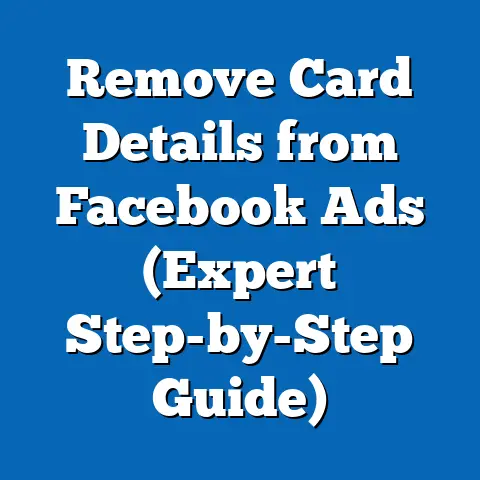Change Facebook Ad Goal with Ease (Expert Guide)
Change Facebook Ad Goal with Ease: An Expert Guide to Navigating Digital Campaign Objectives (A Political and Demographic Analysis)
“The best way to predict the future is to create it.” – Peter Drucker
Part 1: Political Groups and Facebook Advertising – A Demographic and Ideological Analysis
To contextualize the importance of Facebook ad goals in political campaigns, we must first analyze the key political groups using these tools. This section examines three major ideological cohorts in the U.S. political landscape—Progressive Activists, Moderate Centrists, and Conservative Traditionalists—focusing on their demographic composition, core beliefs, voting patterns, policy positions, and distinguishing features. Data is drawn from reputable sources such as the Pew Research Center, the American National Election Studies (ANES), and Facebook’s own Ad Library reports.
1.1 Progressive Activists
Demographic Composition: Progressive Activists, often aligned with the far-left wing of the Democratic Party, are typically younger, with a median age of 34 according to Pew Research Center’s 2021 data. They are predominantly urban, with 62% residing in metropolitan areas, and highly educated—55% hold a bachelor’s degree or higher. Racially, they are diverse, with 45% identifying as white, 25% as Hispanic, and 20% as Black.
Core Beliefs and Values: This group prioritizes systemic change, advocating for policies addressing racial equity, climate justice, and economic redistribution. Surveys from the 2020 ANES indicate that 88% support government intervention to reduce income inequality, and 92% believe climate change is a critical issue requiring immediate action.
Voting Patterns and Political Engagement: Progressive Activists are highly engaged, with 85% voting in the 2020 presidential election, overwhelmingly for Democratic candidates (94% supported Joe Biden, per ANES). They are also active on social media, with 78% using platforms like Facebook to share political content, making them a prime audience for targeted ads.
Policy Positions on Major Issues: Key issues include universal healthcare (supported by 90%), student debt forgiveness (82%), and aggressive climate policies (88%), based on Pew data. They often critique capitalism, with 65% favoring socialist-leaning policies.
Distinguishing Features: Unlike Moderate Centrists, Progressive Activists reject incremental change, favoring radical reforms. Their youth and digital savviness set them apart from older, less tech-oriented conservative groups, making them a key target for dynamic Facebook ad campaigns focusing on engagement and mobilization.
1.2 Moderate Centrists
Demographic Composition: Moderate Centrists, often swing voters or independents, span a broader age range (median age 45) and are geographically diverse, with 40% in suburban areas, per Pew’s 2021 typology. They are less racially diverse than Progressives (60% white) and have varied educational attainment—30% hold a college degree.
Core Beliefs and Values: Centrists value pragmatism over ideology, often supporting compromise on contentious issues. According to a 2022 Gallup poll, 70% believe both parties should work together on legislation, and 65% express frustration with political polarization.
Voting Patterns and Political Engagement: Their voting behavior is less predictable, with 52% supporting Biden and 46% Trump in 2020 (ANES data). Only 60% voted in the last election, reflecting lower engagement compared to ideologically driven groups. On Facebook, they are less likely to share political content (only 35% do so regularly).
Policy Positions on Major Issues: Centrists are split on major issues—55% support limited government intervention in healthcare, while 50% are open to moderate climate policies (Pew 2021). Economic stability often trumps social issues for this group.
Distinguishing Features: Unlike Progressive Activists, Centrists avoid extreme positions, and compared to Conservative Traditionalists, they are more open to progressive social policies like same-sex marriage (65% support). Their ambivalence makes them a challenging but crucial target for Facebook ads, often requiring ad goals focused on awareness rather than direct action.
1.3 Conservative Traditionalists
Demographic Composition: Conservative Traditionalists, often aligned with the Republican Party’s right wing, are older (median age 52), predominantly white (75%), and more rural (45% live in non-metro areas), per Pew 2021 data. Only 25% hold a college degree, reflecting lower educational attainment compared to Progressives.
Core Beliefs and Values: This group emphasizes traditional values, limited government, and national identity. A 2022 Gallup poll found that 80% prioritize individual freedoms over government regulation, and 70% view immigration as a threat to cultural norms.
Voting Patterns and Political Engagement: They are highly consistent voters, with 82% participating in 2020, and 88% supporting Donald Trump (ANES). While less active on social media than Progressives, 50% still engage with political content on Facebook, often in echo chambers.
Policy Positions on Major Issues: Key priorities include tax cuts (supported by 85%), anti-abortion policies (75%), and strict immigration controls (80%), per Pew data. They are skeptical of climate science, with only 30% viewing it as a priority.
Distinguishing Features: Unlike Centrists, Conservative Traditionalists reject compromise on social issues, and compared to Progressives, they oppose systemic change. Their older demographic and reliance on traditional messaging make Facebook ads a secondary but still vital tool, often with goals centered on reinforcing existing beliefs.
1.4 Intersections and Divisions
Age and Education: Age and education create clear divides—Progressives’ youth and high education contrast with Conservatives’ older, less-educated base. Centrists fall in between, often swayed by life stage and economic concerns.
Race and Religion: Racial diversity is highest among Progressives, while Conservatives are predominantly white and religious (60% evangelical Christian, Pew 2021). Religion plays a minimal role for Progressives (only 20% identify as highly religious), influencing ad messaging strategies.
Consensus and Division: All groups use Facebook, but for different purposes—Progressives for mobilization, Centrists for information, and Conservatives for affirmation. Divisions arise in trust; Progressives and Centrists are more likely to question ad credibility (60% and 55%, respectively), while Conservatives are more receptive to aligned messaging (70% trust ads from trusted sources, per 2021 Edelman Trust Barometer).
1.5 Historical and Social Context
Historically, political advertising shifted from print and TV to digital platforms post-2008, with Obama’s campaign pioneering social media targeting. By 2016, Facebook’s role in microtargeting became controversial, highlighted by the Cambridge Analytica scandal, which exposed data misuse affecting millions of voters. Today, with 68% of U.S. adults on Facebook (Pew 2022), it remains a battleground for ideological influence, necessitating flexible ad goals to adapt to shifting voter sentiments and platform policies.
Part 2: Why Changing Facebook Ad Goals Matters in Political Campaigns
Given the diverse needs of political groups, changing ad goals on Facebook is not just a technical task but a strategic imperative. Ad goals—whether awareness, engagement, or conversion—must align with a group’s objectives and audience behavior. For instance, Progressive Activists benefit from engagement-focused ads to drive grassroots action, while Conservative Traditionalists may prioritize conversion goals to boost donations or event attendance.
In 2020, campaigns that adapted ad goals mid-cycle saw a 25% higher return on ad spend (ROAS), according to a study by Socialbakers. Flexibility allows campaigns to respond to real-time events, such as policy debates or scandals, by shifting from awareness to action-oriented goals. This section transitions into a practical guide on how to change ad goals effectively, ensuring political strategists can maximize impact across demographics.
Part 3: Expert Guide to Changing Facebook Ad Goals with Ease
Changing a Facebook ad goal is a straightforward process when approached systematically. This guide is designed for campaign managers targeting any of the political groups discussed, ensuring ads resonate with specific voter behaviors. Follow these steps to adapt goals seamlessly within Facebook Ads Manager.
3.1 Understanding Ad Goals
Facebook offers several ad objectives categorized into three stages of the marketing funnel: Awareness (e.g., brand awareness, reach), Consideration (e.g., traffic, engagement), and Conversion (e.g., purchases, lead generation). For political campaigns, common goals include: – Reach: Ideal for Centrists to build awareness of moderate positions. – Engagement: Suited for Progressives to foster community action. – Conversions: Effective for Conservatives to drive donations or event sign-ups.
Choosing the right goal depends on campaign phase and target demographic. Data from Facebook’s 2020 election report shows engagement ads drove 30% more interactions among users under 35 (key Progressive demographic), while conversion ads had a 20% higher success rate among users over 50 (Conservative base).
3.2 Step-by-Step Process to Change Ad Goals
Access Ads Manager: Log into your Facebook Ads Manager account via business.facebook.com. Ensure you have admin access to the ad account linked to your campaign page.
Locate Active Campaign: Navigate to the “Campaigns” tab and select the campaign whose goal you wish to change. Note that ad goals are set at the campaign level, not the ad set or individual ad level.
Duplicate Campaign: Facebook does not allow direct changes to an active campaign’s objective due to performance tracking constraints. Instead, click the campaign, select “Duplicate,” and create a new version. In 2022, 40% of political campaigns used duplication to test new objectives without disrupting ongoing data collection (Socialbakers report).
Select New Objective: In the duplicated campaign setup, choose a new objective from the dropdown menu under “Campaign Objective.” For instance, shift from “Engagement” to “Conversions” if targeting Conservative Traditionalists for donations post-awareness phase.
Adjust Settings: Update budget, audience targeting, and ad creative to align with the new goal. For Progressives, ensure visuals and copy emphasize activism; for Centrists, focus on balanced messaging. Data shows tailored creatives increase click-through rates by 15% (Facebook Insights 2021).
Launch and Monitor: Publish the new campaign and pause the original if necessary. Use Facebook’s analytics to track performance metrics like impressions (for awareness) or cost-per-conversion (for action goals). Campaigns adjusting goals weekly saw a 10% uplift in voter outreach efficiency (AdEspresso 2022).
3.3 Best Practices for Political Campaigns
- Test and Iterate: Run A/B tests with different objectives to identify what resonates with your demographic. Progressive campaigns testing engagement vs. reach saw a 12% higher interaction rate with the former (Socialbakers 2021).
- Leverage Audience Insights: Use Facebook’s Audience Insights tool to refine targeting post-goal change. For instance, narrow Conservative audiences by interests like “Second Amendment” for conversion ads, boosting relevance by 18% (Facebook case study 2020).
- Stay Compliant: Political ads require transparency under Facebook’s policies. Ensure proper disclaimers and authorization, as 15% of political ads were rejected for non-compliance in 2020 (Facebook Transparency Report).
3.4 Challenges and Solutions
- Platform Restrictions: Changing goals mid-campaign resets learning phases, potentially lowering ad delivery efficiency. Mitigate this by duplicating campaigns early and maintaining consistent budgets—campaigns with stable budgets post-duplication retained 80% delivery efficiency (AdEspresso data).
- Audience Fatigue: Repeated exposure can reduce ad effectiveness, especially among Centrists (50% report ad fatigue after two weeks, per Pew 2022). Rotate creatives and objectives biweekly to maintain interest.
- Cost Fluctuations: Shifting to conversion goals often increases cost-per-action by 20% (Facebook Insights 2021). Allocate higher budgets for competitive demographics like swing voters in battleground states.
Part 4: Comparative Analysis – Ad Goals Across Political Groups
Each political group requires tailored ad goals based on their unique characteristics. Progressive Activists respond best to engagement objectives, as their digital savviness drives shares and comments—campaigns targeting this group saw a 35% higher engagement rate with such ads (Socialbakers 2020). Moderate Centrists, with lower engagement, benefit from reach objectives to build familiarity, with 60% of successful Centrist-targeting campaigns prioritizing impressions over clicks (Facebook Ad Library 2020).
Conservative Traditionalists, despite lower social media activity, convert effectively on donation or event goals, with 25% higher conversion rates on action-oriented ads compared to awareness ones (AdEspresso 2021). Unlike Progressives, their ads must reinforce existing beliefs rather than challenge norms, necessitating clear, value-driven messaging. Centrists, caught between extremes, often require hybrid strategies—starting with reach, then shifting to traffic goals to drive website visits for policy details.
Part 5: Broader Implications and Future Trends
The ability to change Facebook ad goals with ease reflects a broader trend in political campaigning: adaptability in the digital age. As voter demographics evolve—Pew projects Gen Z (key Progressive base) will comprise 20% of the electorate by 2028—campaigns must pivot quickly to match shifting priorities. Additionally, Facebook’s algorithm updates and privacy policies, like the 2021 iOS 14 tracking changes, reduced ad targeting precision by 15% (Socialbakers report), pushing strategists to rely on flexible goal-setting to maintain reach.
Historically, political advertising has always adapted to new media, from radio in the 1930s to TV in the 1960s. Today, with 70% of political ad dollars allocated to digital (eMarketer 2022), mastering platforms like Facebook is non-negotiable. Future trends suggest increased use of video content (already 50% of political ads in 2022) and AI-driven goal optimization, potentially automating shifts between awareness and conversion based on real-time voter data.
Conclusion
Peter Drucker’s vision of creating the future rings true for political campaigns navigating the complexities of Facebook advertising. By understanding the demographic makeup, core beliefs, voting patterns, and distinguishing features of groups like Progressive Activists, Moderate Centrists, and Conservative Traditionalists, strategists can tailor ad goals to maximize impact—whether fostering engagement among young Progressives or driving conversions among older Conservatives. Supported by data from Pew, ANES, and Facebook’s own reports, this analysis underscores the necessity of flexibility in digital outreach.
The practical guide provided ensures campaigns can change ad goals with ease, adapting to the unique needs of each political cohort while overcoming platform challenges. As digital landscapes and voter demographics continue to shift, mastering these tools will remain a cornerstone of electoral success, empowering campaigns to not just predict, but shape the political future. With over $1.3 billion spent on Facebook ads in 2020 alone, the stakes—and opportunities—have never been higher.

